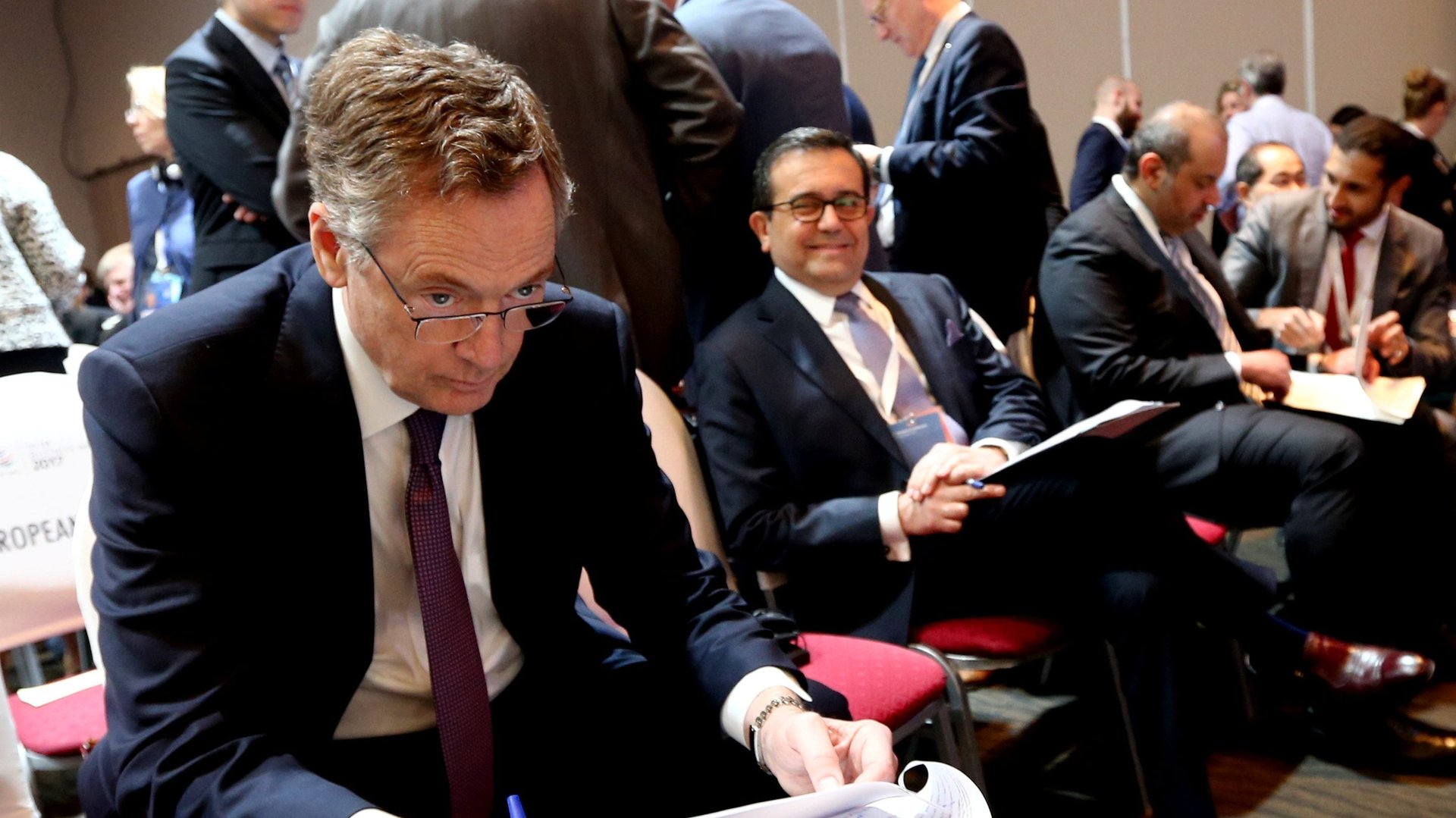The US’s top trade official has 14 days to sort out a $46 billion headache
Robert Lighthizer has a lot do over the next 14 days. After Donald Trump’s dramatic tariffs announcement, the US’s top trade official traveled today to Brussels to speak with trade partners.


Robert Lighthizer has a lot do over the next 14 days. After Donald Trump’s dramatic tariffs announcement, the US’s top trade official traveled today to Brussels to speak with trade partners.
Lighthizer is tasked with negotiating the terms of the US’s new steel and aluminum tariffs before they go into effect, as head of the United States Trade Representative. He will meet EU trade commissioner Cecilia Malström, and Japan’s minister of economy, trade, and industry Hiroshige Sekō.
The three will discuss a “range of global and bilateral trade issues,” including tariffs, an USTR official said. Lighthizer will have a number of thorny issues to sort out with Malström and Sekō, including
- Will the US negotiate with the EU as a block, or on an individual country-by-country basis?
- How long will the tariffs last?
- Which products, specifically, will be included?
Trump’s announcement that the US will tax every country except Canada and Mexico 25% on steel they export to the US and 10% on aluminum, was bitterly disputed within the White House. The tariffs go into effect March 23, Trump said, but they could be “moderated or removed” by individual countries through negotiation. Asked about specifics, the White House said the USTR is “in charge of the country exclusion process.”
The US imported $27 billion of steel and $19 billion of aluminum in 2017, most of it from countries that are part of long-standing agreements with the US on everything from military bases to shared immigration data. The EU’s Malstrom and South Korean officials have said they believe they should be exempted from the metals taxes.
Negotiations could be a challenge for the USTR, a modest-sized office with less than three dozen key officials, many of whom have yet to be sworn in. Lighthizer, 70, accrued decades of experience as trade lawyer before joining the Trump White House, but there are many counter-parties and questions yet to be answered. Governments may also be wary of dealing with an erratic administration.
Judged by volume, the US gets 81% of its steel from 10 countries (pdf, pg 3):
By value, Canada is still the leader, followed by the European Union and South Korea.